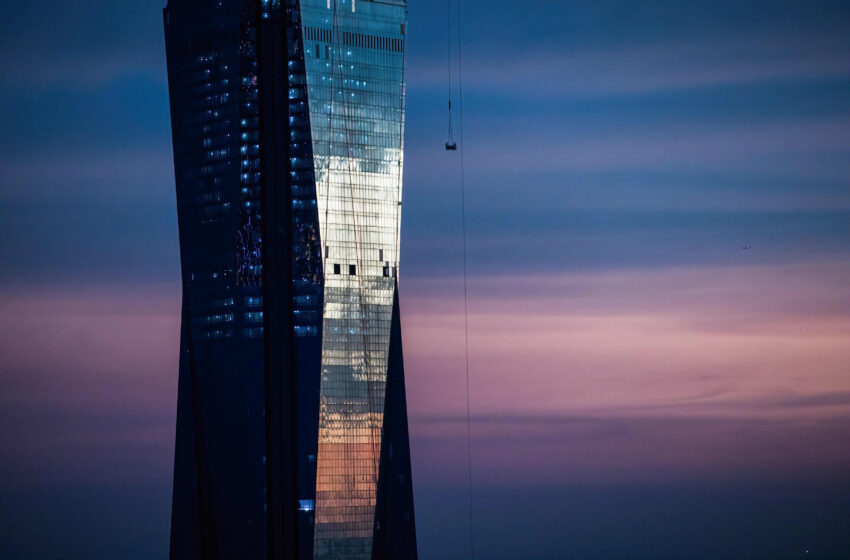
Is a recession on the way? These unconventional economic indicators may provide some clues

The completion of the world’s tallest buildings is said to be one less conventional indicator of an economic downturn. Pictured here on April 3, 2022, is the Merdeka 118 tower in Malaysia, which was completed at the end of the 2021 and is said to be the world’s second tallest skyscraper.
Sopa Images | Lightrocket | Getty Images
It’s not just bond and stock markets that can signal an economic downturn.
From the men’s underwear index, to the hemline index, there are also a number of more unconventional economic indicators that could be worth monitoring.
Fears of a recession have been on the rise recently. Investors have become increasingly concerned that record-high inflation amid the Russia-Ukraine war, coupled with the Federal Reserve’s plans to aggressively hike interest rates, could slow economic growth.
This deepening sense of unease has been reflected in the U.S. government bond market, through what is known as a yield curve inversion, which has historically occurred prior to recessions. Investors have been selling out of short-dated Treasurys in favor of longer-dated government debt, prompting 2-year bonds yields to rise above the 10-year rate.
However, economists have stressed that an inversion in bond yields is by no means a guarantee of a recession. Indeed, this indicator can emerge as much as two years before an economic downturn takes hold.
There’s a slew of other economic data that can act as recession signals, including employment and consumer spending figures. Market watchers have also turned to more unusual gauges of economic health.
Skyscraper index
British economist Andrew Lawrence developed the so-called “skyscraper index” in 1999. The measure links the construction of the world’s largest buildings with the onset of an economic crisis.
Lawrence said in a 2012 interview with the non-profit Council on Tall Buildings and Urban Habitat that he had looked as far back as the late 1800s and found correlations between the completion of the world’s tallest buildings and economic crises.
Notable examples include the completion of the Chrysler and Empire State buildings in New York during the Great Depression.
Lawrence explained that the completion of these skyscrapers tends to “cap off what is a large building boom.” However, he pointed out that it’s not the tall building itself that is the issue but rather when there is a “cluster” of these skyscrapers.
In terms of recently completed skyscrapers, Kuala Lumpa’s Merdeka 118 tower was completed at the end of 2021 and is the world’s second-tallest building. New York’s Steinway Tower, said to be the skinniest skyscraper in the world and one of the tallest in the Western hemisphere, has also just been completed.
Men’s underwear index
For former Federal Reserve Chairman Alan Greenspan, it’s sales of men’s underpants.
NPR correspondent Robert Krulwich said back in 2008, amid the global financial crisis, that Greenspan had explained to him that because underpants were one of the last pieces of clothing men look to buy, it acts as a good indicator of when times are hard.
Greenspan had reportedly said that sales of men’s underpants tend to be quite consistent, but dips in sales indicate that men’s finances are so stretched they decide to hold off on buying replacements.
Hemline index
The “hemline index” emerged on the back of a thesis in the 1920s by Wharton Business School economist George Taylor. The theory is that skirts become shorter when markets are on the rise and longer in downturns.
The economic exuberance of the 1920s and the appearance of knee-length flapper skirts, along with the emergence of the mini skirt in the 1960s amid stronger financial conditions, have been cited as examples to support this theory.
However, there have often been questions raised over its credibility.
A study published in 2010 by the Erasmus School of Economics Econometric Institute, in the Netherlands, collected monthly data on hemlines between 1921 and 2009.
“The main finding is that the urban legend holds true but with a time lag of about three years,” the authors of the report said.
Lipstick index
Estee Lauder Chairman Leonard Lauder developed the “lipstick index” amid the economic downturn in 2001. He suggested that women would spend more on small luxuries, like lipstick, as pick-me-ups when times are hard.
This theory didn’t ring true during the Covid-19 pandemic in 2020 when sales of makeup declined as consumers were restricted to staying at home during lockdowns.
Russ Mould, investment research director at AJ Bell, told CNBC via telephone that while investors should not rely on these soft economic indicators implicitly, they were “always worth keeping an eye on.”
Mould said it was when the prices of luxuries such as champagne and art “go through the roof” at the same time as share prices, share buybacks, mergers and acquisitions and debt that investors should start to feel a bit more concerned.
“It’s a sort of bull market, happy-days-are-gonna-last-forever-type behavior that just can’t last forever, because it never does,” he said.
Check out: There are signs a recession could be on the way. Here are some ways to protect your savings
